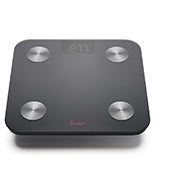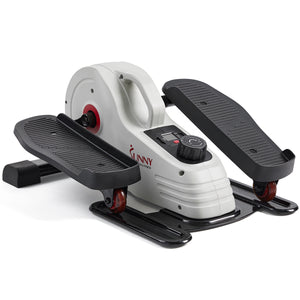We’ve all heard that sitting too long is bad for you. The fact that too much sitting can contribute to hip and back pain, undermines fitness gains, and drains mental health isn’t exactly a surprise for those of us strapped to a desk for most of the day.[1, 2, 3] But the idea that “sitting is the new smoking,” a phrase coined in 2014 by Dr. James Levine, a professor of medicine at the Mayo Clinic, feels a bit extreme.
Which begs the question: Just how bad is sitting?
According to a more recent review, sitting isn’t exactly comparable to smoking (phew), but too much of it can still shorten your life.[4] In fact, a 2024 study of 481,688 people found that those who sat for most of the workday had a 16% higher risk of dying from any cause.[5]
This news isn’t exactly convenient (not to mention, feels a little doom and gloom) if you work a desk job. Luckily, there’s plenty you can do to lower and even eliminate the risk of a sedentary lifestyle. Here’s everything you need to know.
Why Sitting Is Linked to a Shorter Life
Research has linked long periods of sitting with a number of health concerns, including obesity, higher body fat percentage, type 2 diabetes, metabolic syndrome, and dementia.[6, 7, 8, 9, 10] It also comes with an increased risk of death from cardiovascular disease and cancer.[5, 11]
One study published in the American Journal of Epidemiology found that being sedentary for more than 10 hours a day sped up biological aging by 8 years.[12] Biological aging, as opposed to chronological aging—which is marked by how many years have passed since you were born—determines how well your body is holding up compared to others of the same age. Put simply, uninterrupted sitting is aging you faster.
Perhaps more importantly, a lot of what you perceive as aging—how you feel day to day; your energy level; muscle mass; bone and joint health; and mobility—is heavily influenced by your sitting time. It can even contribute to poor mood, sleep, and stress.[3] When all of the above compounds, it only makes it harder to break the sedentary cycle.
How to Reduce the Risk of Sitting
Overall, research points to less sitting and more moving for better health. Combining a regular workout routine with small bouts of activity throughout the day (a one-minute stroll to the water cooler here and a stretch break there) seems to be the secret sauce.
Here are a few things to consider:
If you sit for work, you have to be more active
If you sit a lot, the recommended 150 minutes a week of moderate aerobic activity and strength training might not be enough.[13] It seems the more you sit, the more exercise you need. One review (which combined the sitting and exercise habits of over one million men and women) suggests sedentary people might need to double or triple the standard weekly exercise recommendations to eliminate the health risks of sitting.[14]
Set a timer
Getting up from your desk for a minute or two every 30 minutes can also help counter long periods of sitting.[15] Walking, stretching, or taking the stairs are easy ways to take a break that can reduce blood sugar, and boost circulation and mobility.
If you have a little more time, consider a workout snack (AKA a short 5- to 10-minute workout) like this 5-Minute Bodyweight Cardio or 5-Minute Mobility Routine.
Standing desks aren’t a magic bullet
Working at a standing desk can be a good break from sitting, but standing for prolonged periods can also cause pain.[16] The key is regular movement, whether standing or seated.
If you have a standing desk, an under-desk treadmill is a great option for increasing your step count. For a standard desk set-up, consider an under-desk elliptical or bike to boost circulation and blood flow to your legs while sitting down. Or sub your classic swivel seat for an active chair—a seat that encourages movement while you sit—like a yoga ball. These chairs are designed to improve posture and reduce back pain.
Shop:
Walk after you eat
Let’s be honest, it doesn’t take your full hour-long lunch break to shovel down a salad or sub. Before you start doom scrolling, take a quick walk.
Recent research suggests that walking after a meal can help lower blood sugar levels. And it doesn’t need to be a long walk – a short walk, as little as two to five minutes, can help.[17]
Try a chair workout
When you’re too lazy to get out of your chair (we’ve all been there), try a 10- or 15-Minute Seated Workout. Or do soleus pushups—basically, just seated calf raises.
Performing soleus pushups can boost your metabolism for hours, lower your blood sugar, and curb your risk for type 2 diabetes, as suggested by a 2022 study from the journal iScience.[18]
Make TV time active
Sitting at work isn’t your only problem. After a long day in the office, you might take a break for dinner, go to the gym, or cart kids to and from activities. But after that, we’d guess you’re chilling in front of the TV.
Remember that study that followed one million peoples’ sitting and workout time? They also accounted for TV time and found that extra exercise didn’t reduce the risk of lounging in front of the TV like it did for occupational sitting.[14]
Your move? Get off the couch. Your next Love Is Blind binge is an easy time to work in stretching, foam rolling, or light calisthenics that will leave your body feeling even better by the time you shuffle off to bed.
The Bottom Line
Too much sitting has been linked to a shorter lifespan and chronic conditions like type 2 diabetes, heart disease, and obesity. Sitting less and moving more can mitigate your risk of health concerns while increasing your mobility, strength, bone density, blood sugar control, and metabolism. To reduce the risk of prolonged sitting, aim to work out regularly and take a break to get up and move once every 30 minutes.
REFERENCES
1. Butte, K. et al. (2022). The Relationship Between Objectively Measured Sitting Time, Posture, and Low Back Pain in Sedentary Employees During COVID-19. https://link.springer.com/article/10.1007/s11332-022-01031-x.
2. Kulinski, J. et al. (2014). Association Between Cardiorespiratory Fitness and Accelerometer-Derived Physical Activity and Sedentary Time in the General Population. https://www.mayoclinicproceedings.org/article/S0025-6196(14)00382-6/abstract.
3. Ellingson, L. et al. (2018). Changes in Sedentary Time Are Associated with Changes in Mental Wellbeing Over 1 Year in Young Adults. https://pmc.ncbi.nlm.nih.gov/articles/PMC6082791/.
4. Valance, J. et al. (2018). Evaluating the Evidence on Sitting, Smoking, and Health: Is Sitting Really the New Smoking?. https://pmc.ncbi.nlm.nih.gov/articles/PMC6187798/.
5. Gao, W. et al. (2024). Occupational Sitting Time, Leisure Physical Activity, and All-Cause and Cardiovascular Disease Mortality. https://pmc.ncbi.nlm.nih.gov/articles/PMC10799265/.
6. Pulsford, R. et al. (2013). Sitting Behavior and Obesity. https://pmc.ncbi.nlm.nih.gov/articles/PMC3550520/.
7. Liao, J. et al. (2024). Association of Daily Sitting Time and Leisure-Time Physical Activity with Body Fat Among U.S. Adults. https://www.sciencedirect.com/science/article/pii/S2095254622001016.
8. Diabetes Care. (2021). Less Sitting for Preventing Type 2 Diabetes. https://diabetesjournals.org/care/article/44/10/2194/138568/Less-Sitting-for-Preventing-Type-2-Diabetes.
9. Bankoski, A. et al. (2011). Sedentary Activity Associated With Metabolic Syndrome Independent of Physical Activity. https://pmc.ncbi.nlm.nih.gov/articles/PMC3024375/.
10. Raichlen, D. et al. (2023). Sedentary Behavior and Incident Dementia Among Older Adults. https://pubmed.ncbi.nlm.nih.gov/37698563/.
11. Gilchrist, S. et al. (2020). Association of Sedentary Behavior With Cancer Mortality in Middle-aged and Older US Adults. https://jamanetwork.com/journals/jamaoncology/fullarticle/2767093.
12. Shadyab, A. et al. (2017). Associations of Accelerometer-Measured and Self-Reported Sedentary Time With Leukocyte Telomere Length in Older Women. https://academic.oup.com/aje/article-abstract/doi/10.1093/aje/kww196/2915786/Associations-of-Accelerometer-Measured-and-Self.
13. CDC. (2023). Adult Activity: An Overview. https://www.cdc.gov/physical-activity-basics/guidelines/adults.html.
14. Ekelund, U. et al. (2016). Does Physical Activity Attenuate, or Even Eliminate, the Detrimental Association of Sitting Time with Mortality? A Harmonised Meta-Analysis of Data From More Than 1 Million Men and Women. https://pubmed.ncbi.nlm.nih.gov/27475271/.
15. Hwang, C. et al. (2022). The Physiological Benefits of Sitting Less and Moving More: Opportunities for Future Research. https://pmc.ncbi.nlm.nih.gov/articles/PMC8628304/.
16. Waters, T. et al. (2015). Evidence of Health Risks Associated with Prolonged Standing at Work and Intervention Effectiveness. https://pmc.ncbi.nlm.nih.gov/articles/PMC4591921/.
17. Buffet, A. et al. (2022). The Acute Effects of Interrupting Prolonged Sitting Time in Adults with Standing and Light-Intensity Walking on Biomarkers of Cardiometabolic Health in Adults: A Systematic Review and Meta-analysis. https://link.springer.com/article/10.1007/s40279-022-01649-4.
18. Hamilton, M. et al. (2022). A Potent Physiological Method to Magnify and Sustain Soleus Oxidative Metabolism Improves Glucose and Lipid Regulation. https://www.cell.com/iscience/fulltext/S2589-0042(22)01141-5.





























Add Your Name & Email
Please enter your name and email to continue.We won’t display your email publicly.